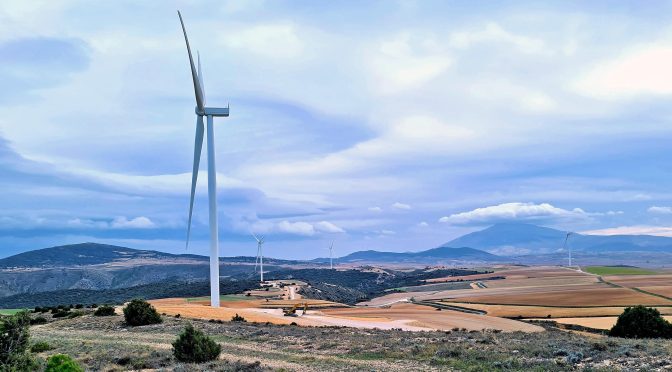Wind, hydraulic, photovoltaic and concentrated solar power generated 53% of the electricity this month in our country and 75.5% of the energy was emission-free. Photovoltaic solar doubles its monthly generation compared to last year and wind continues to lead the national mix for the fifth consecutive month.
The national electricity demand experienced a decrease of 2.3% in March compared to the same month of the previous year, after discounting the effects of temperature and working hours. In gross terms, a demand of 20,521 GWh is estimated, 4.4% less than that of March 2022.

In the accumulated of the first quarter of 2023, Spain has registered a demand of 62,715 GWh, 2.6% less than in the same period of 2022. Once again, once the effects of the calendar and temperatures are taken into account, the demand decreases by 3% compared to 2022.
During this month, renewable production has been 22.9% higher than that of March 2022, and has reached the figure of 12,755 GWh, 53% of the total mix. For its part, the production of the set of technologies that do not emit CO2 equivalent has meant 75.5% of the total.
For the fifth consecutive month, wind energy has been the leading source of the month, with a production of 6,718 GWh and a share of 27.9%, according to the provisional data available today.
For its part, photovoltaic solar, with 3,015 GWh recorded in March, doubled its production in the same month of 2022, obtaining a participation quota of 12.5%. The amount of GWh produced with photovoltaic solar energy during this month is the highest since last August.
Hydraulics, whose participation in March was 25.4% higher than that of the same month of the previous year, reaching 2,212 GWh, 9.2% of the total.
Generation structure in March and in 2023

Peninsular demand falls by 2.4%
At the peninsular level and once the effects of working hours and temperatures have been taken into account, the demand has been 2.4% lower than in March 2022. In gross terms, the demand has been 19,344 GWh, 4.6 % less than the same month of the previous year.
In the first quarter of the year, demand on the peninsula was 59,224 GWh, 2.7% less than that registered in 2022. Once the effects of working hours and temperatures were taken into account, demand fell by 3.1% .
The group of peninsular renewables generated 54.6% of the total in March, according to the provisional data available today, which show a production of 12,543 GWh, 22.8% more than in the same month of the previous year. In turn, emission-free technologies contributed 78.2% of the total.
The peninsular generation structure for March is also led by wind power, which has been responsible for 28.6% of the total with 6,584 GWh produced during this month.
The electrical system in the Balearic and Canary Islands
In the Balearic Islands, the demand for electricity in March was 3.3% lower than in the same month of 2022, once the effects of the calendar and temperatures were taken into account. Thus, gross demand is estimated at 415,998 MWh, 5.9% less than that of March of the previous year. In the first three months of 2023, the gross demand of the Balearic Islands is estimated at 1,297,713 MWh, 0.5% less than in the same period of 2022.
As for generation, the combined cycle, with 72.1% of the energy produced in the Balearic Islands, was the first source on the islands this month. For its part, the renewable energy without equivalent CO2 emissions generated in the Balearic Islands was 85.1% higher than that of March 2022 and represented 13.3% of the total. In addition, the submarine link between the Peninsula and Majorca contributed during this month to cover 19.8% of the Balearic electricity demand.
For its part, in the Canary Islands, the demand for electricity grew by 2% compared to the same month in 2022, taking into account the effects of labor and weather. In gross terms, the demand was 728,371 MWh, 2.3% more. In the first quarter of 2023, the Canary Islands demand is estimated at 2,096,639 MWh, 1% more than in the same period of 2022.
As for electricity generation in the Canary Islands, the combined cycle, with 41% of the total, was also the first source in March. Renewables and emission-free technologies generated 21.8% more this month than in the same period of the previous year and reached a share of 23.1% of production, with wind power contributing 18.4%.


